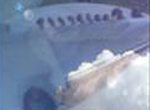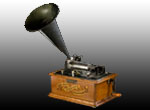xysoom


Registrato: Mag 15, 2020
Messaggi: 1676
|
 Oggetto: Millimeter Wave Radar: Principles and Applications Oggetto: Millimeter Wave Radar: Principles and Applications
Inviato: 20-01-2022 6:05:28 |
 |
Millimeter Wave Radar: Principles and Applications
This chapter gives a radar sight to millimeter-waves (MMW) propagation and scattering, considers radar principles, features of subsystems and components of MMW radars. Rather complicated notions of radar theory are stated in very simple manner as a kind of overview. Then application of MMW radar for Intelligent Transportation Systems (ITS) is analyzed in detail as the main section of the chapter. The role of radar sensor in ITS is shown, and frequency allocation for ITS radars is analyzed. Traffic Surveillance Radar that is an element of ITS infrastructure is described. Then automotive radars are categorized on long-range, medium-range and short-range, and each category is considered. On this basis different functional applications of automotive radar are briefly described. The accent is done to the radar-based communications for both car-to-car and entire ITS system. Necessity and possibility of data exchange using WLAN is indicated. MMW radars are employed in a wide range of commercial, military and scientific applications for remote sensing, safety, and measurements. That is why other important MMW radar applications are considered. Finally, the conclusion is done that MMW radar is a universal instrument for numerous promising applications and a device quite enable for a network use and data exchange via wireless networks.Get more news about millimeter wave radar,you can vist our website!
Millimeter-wave radars serve a wide range of applications such as remote sensing, safety, and measurement. In most applications, millimeter-wave sensors are superior to microwave- and infrared-based sensors. Firstly, millimeter-wave radars offer better range resolution than lower frequency microwave radars. Secondly, they penetrate fog, smoke, and other obscurants much better than infrared sensors.
In any case, the radar determines the size, characteristics, range, and velocity of the object or scene by measuring the characteristics of the return signal after reflection/scattering from it. Specifically, the amplitude, spectral contents, and return signal’s arrival time provide the necessary information.
The figures below show examples of radar architecture. The most important element in any radar is the transmitter source for the equipment. Of note, the transmitter source often additionally serves as the local oscillator source. The transmitter signal can be CW, pulsed, or modulated with one of many specific radar waveforms. The received signal can be pre-amplified using a low-noise amplifier for enhanced sensitivity or range. Then the radar receiver or downconverter produces the appropriate intermediate frequency or baseband radar return signal. In turn, this is amplified, filtered, and processed by the radar signal processor to generate the information or image.
Pulsed radars are generally coherent radars, using a stable lower frequency source as the reference signal. They normally use a single antenna (mono-static configuration) for transmit and receive functions. A modulator creates the required radar pulses and waveform as well as any necessary frequency agility. The transmitter module generates a short pulse of millimeter wave that is fed to the antenna. This pulse may be from a few microseconds to a few nanoseconds. Finally, the return signal is routed to the receiver by a duplexer such as a circulator. When necessary, receiver protection and limiting functions are incorporated in the receiver’s front end.
Low phase noise contents of the transmitter signal and of any local oscillator used in the receiver is essential to the operation of the radar. Depending on the range, sensitivity and resolution, and other requirements, the phase noise plays a vital role in determining the radar’s capabilities.
CW and FMCW radars typically transmit a continuous wave signal, which could be frequency modulated or chirped/swept. When frequency modulated, the linearity and bandwidth of the sweep is critical in determining the accuracy and the resolution of the radar. An FMCW radar can be configured as either mono-static or bi-static (single or separate antenna for transmit and receive functions). The local oscillator signal in this type of radar is generally the same as the transmitter signal. It is derived by splitting the power from the radar’s master source.
|
|
![Show/hide content [x]](themes/dragonfly/images/minus.png) Menu Principale
Menu Principale HOME
HOME NADA YOGA
NADA YOGA AMBIENTI SONORI
AMBIENTI SONORI VISUAL SOUND
VISUAL SOUND MUSICA LIVE
MUSICA LIVE INDIAN MUSIC
INDIAN MUSIC UTILITA'
UTILITA' AREA RISERVATA
AREA RISERVATA![Show/hide content [x]](themes/dragonfly/images/minus.png) Info Utente
Info Utente![Show/hide content [x]](themes/dragonfly/images/minus.png) Floating Sarod
Floating Sarod![Show/hide content [x]](themes/dragonfly/images/minus.png) Discografia
Discografia![Show/hide content [x]](themes/dragonfly/images/minus.png)
![Show/hide content [x]](themes/dragonfly/images/minus.png) Visite
Visite






